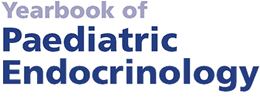This Yearbook provides the 2018–19 highlights in paediatric endocrine science. As of last year, we are online at http://www.espeyearbook.org/ and continue to experiment with the best way to publish the Yearbook. Those of you who prefer to read a hard copy can now purchase the book at Amazon for a nominal fee.
The enormous advances in modern medical science are based on new knowledge and concepts in the diverse fields of clinical diagnosis and treatment, genetics and genomics, innate immunology, molecular biology, systems biology, population genetics, proteomics and metabolomics, evolutionary biology – all of these require our attention. Understanding of the nature and mechanisms of disease, improved management and new therapies depend on such multi-disciplinary considerations.
Among other highlights, the Yearbook 2019 describes:
• New treatments: long-term methimazole in Graves' disease; FGF23 antibody treatment in XLH; oestrogen versus androgen in complete androgen insensitivity syndrome: Letrozole in boys with constitutional delay of growth and puberty; psychosocial benefits of insulin pump therapy; liraglutide in adolescents with T2DM; orlistat in Type 1 hyperlipoproteinemia; a novel non-steroidal androgen-receptor antagonist;
• New genes: high prevalence of growth plate gene variants in familial short stature; genetics of human thinness; KDM6A in congenital hyperinsulinism; IRS4 in central hypothyroidism; microRNA-140 in skeletal dysplasia; DNMT3A in microcephalic dwarfism; ESR2 in ovarian and pubertal failure;
• New mechanisms: primary cilia in thyroid follicle function; stem cells in the growth plate; RANKL reverse signaling; epigenetic repression of the androgen receptor; BRCA2 in ovary development and function; SIRT1 and AMPK link obesity to puberty timing; genome amplification and cellular senescence in placental development; late-pregnancy dysglycemia in obese mothers;
• Other insights: single-cell profiling the hypothalamus; vitamin D-binding protein deficiency; prevalence of cranial MRI findings in girls with precocious puberty; adrenarche hormones associated with anxiety; excess mortality and cardiovascular disease in type 1 diabetes; clinician personality influences T1DM outcomes; improved infant nutrition and adult cardiometabolic disease in rural Guatemala; copeptin to diagnose diabetes insipidus.
Among important therapeutic developments this year is Onpattro (Patisiran) that became the first RNA interference drug to win US FDA approval. The drug works by silencing the gene that is responsible for hereditary transthyretin-mediated amyloidosis, which cause problems with heart and nerve function (see paper 14.2). Orilissa (Elagolix) became the first oral gonadotropin-releasing hormone (GnRH) antagonist to win FDA approval (see 10.1530/ey.15.15.6). An oral medication reduced liver fat in a phase 2 trial in non-alcoholic steatohepatitis NASH patients; MGL-3196 is a thyroid hormone receptor β-selective agonist and works by reducing cholesterol levels.
We are grateful to our 13 Associate Editors and their coauthors, who have done an enormous work to discern this year’s advances and provide their chapters in a timely fashion. We thank Outi Mäkitie and Olle Söder, who have been with us for 9 and 11 years, respectively, and their teams for their excellent previous contributions. We welcome Ola Nilsson and Christa Flück as new Associate Editors. We are grateful to ESPE for their continuing endorsement and support of the Yearbook series and to Bioscientifica for their professional and efficient work to produce this edition.
Ze’ev Hochberg (Haifa) and Ken Ong (Cambridge)
Editors



